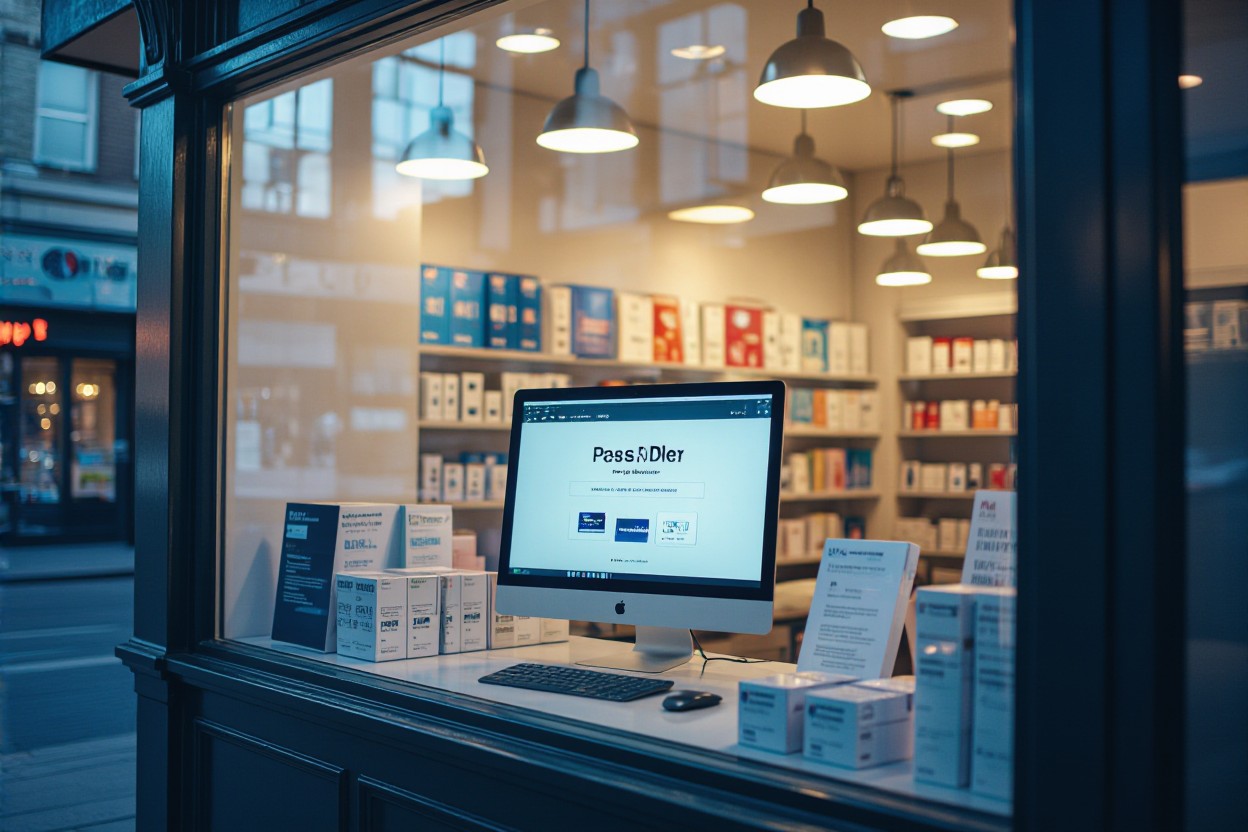Many small business owners struggle to get noticed online, but Pay Per Click (PPC) advertising can be a game-changer for your growth. By investing in targeted ads, you can reach potential customers exactly when they’re searching for your products or services. However, without the right strategy, your budget might quickly drain with little to show for it. When done correctly, PPC offers measurable results and immediate traffic, making it one of the most effective ways to boost your online presence and sales. Let’s explore how you can make PPC work for your small business.

Key Takeaways:
- Pay Per Click (PPC) advertising offers small businesses a cost-effective way to reach targeted audiences quickly.
- Choosing the right keywords is imperative to maximize ROI and attract quality traffic that converts.
- Setting a clear budget helps small businesses control expenses while testing different ad strategies.
- Crafting compelling ad copy and using strong calls-to-action can significantly improve click-through rates.
- Regularly monitoring and optimizing PPC campaigns ensures ongoing performance improvements and prevents wasted spend.
- Utilizing geo-targeting narrows the audience to local customers, increasing the relevance of your ads.
- Integrating PPC with other marketing efforts like SEO and social media amplifies overall brand visibility and results.

The Power of Pay Per Click: Why Small Businesses Can’t Afford to Ignore It
Pay Per Click advertising gives your business a strategic edge by placing your brand directly in front of customers who are ready to buy. Unlike organic methods that can take months to show results, PPC delivers instant visibility, letting you connect with your audience the moment they’re searching for products or services like yours. This immediacy not only boosts traffic but also accelerates sales, making PPC an indispensable tool in your marketing arsenal.
Maximizing Visibility in a Competitive Landscape
In crowded markets where every click counts, PPC ensures your ads appear before your competitors’. Leveraging keyword targeting and local ads, you can dominate search engine results pages (SERPs), giving your small business prominence where it matters most. For example, businesses using tailored PPC campaigns often see a 20-40% increase in qualified leads, proving that precise ad placement directly influences your market share.
Budget-Friendly Marketing that Drives Immediate Results
PPC offers flexible budget options that let you control spending while achieving fast outcomes. Small businesses often start with as little as $5 a day, and with proper targeting, even modest budgets can generate a strong return on ad spend (ROAS). You avoid wasted dollars since you only pay when someone clicks your ad, making every penny count.
With advanced tools like Google Ads’ bidding strategies and audience segmentation, you can optimize campaigns continuously to reduce cost-per-click while boosting conversions. For instance, implementing geo-targeting helps you focus spend on high-value areas, enhancing local engagement without overspending. This agile approach ensures your marketing stays both effective and affordable, turning budgets of a few hundred dollars into tangible sales growth.
Crafting Your Winning PPC Strategy
Building an effective PPC strategy means aligning every element—from targeting to bidding—with your business goals. Focus on creating tightly themed ad groups and selecting keywords that match your audience’s search intent. Testing different ad copies while monitoring performance metrics such as click-through rates and conversion costs sharpens your approach. Strategic budget allocation and continuous optimization ensure your small business maximizes ROI and stays competitive in your niche.
Identifying Your Target Audience: The Key to Success
Knowing who your ideal customers are lets you tailor your ad campaigns to speak directly to their needs. Use demographics, search behavior, and location data to segment audiences precisely. For example, targeting busy parents in your area searching for emergency plumbing services can drastically improve relevancy and click-through rates, funneling more qualified leads your way.
Setting Clear Objectives: What Do You Want to Achieve?
Before launching your PPC campaign, define measurable goals like increasing website traffic by 30%, generating 50 new leads monthly, or boosting online sales by 20%. These clear targets guide your bidding strategy, keyword selection, and ad design, ensuring every dollar spent works toward tangible business outcomes.
Setting clear objectives goes beyond generic goals—it demands specificity and tracking. For instance, aiming to increase e-commerce conversions by 15% in three months helps you tailor landing pages, choose conversion-centered keywords, and evaluate ad effectiveness with precision. Establishing Key Performance Indicators (KPIs) such as Cost Per Acquisition (CPA) or Return on Ad Spend (ROAS) ensures your campaigns remain focused and profitable.
Navigating the Major PPC Platforms: Google Ads vs. Social Media Advertising
Choosing between Google Ads and social media advertising comes down to where your audience spends most of their time and how they search. Google Ads targets intent-driven users actively looking for services, delivering high-conversion traffic. Social media ads, on platforms like Facebook and Instagram, excel at building brand awareness and engaging prospects earlier in their buying journey. Understanding these differences lets you allocate your budget effectively to capture both immediate leads and long-term customer relationships.
The Advantages of Google Ads for Local Businesses
Google Ads connects your business directly with potential customers searching for your services nearby. Its geo-targeting capabilities let you focus ad spend on specific zip codes or neighborhoods, maximizing relevance. With features like call extensions and local service ads, you gain a competitive edge by making it easy for users to contact you instantly. For local businesses, this means higher-quality leads and measurable ROI through precision targeting and real-time performance tracking.
Engaging Content Strategies for Facebook & Instagram
Social media platforms thrive on visual storytelling and interactive content that resonate emotionally. Highly shareable formats like videos, stories, and carousel ads work best to increase engagement and brand recall. Brands that personalize messages—using audience insights to tailor content—see up to 70% higher engagement rates. Incorporating user-generated content and timely offers encourages conversations, creating a genuine connection between your small business and its community.
Diving deeper into Facebook and Instagram strategies, businesses find success by leveraging their comprehensive targeting tools combined with compelling creative. For example, short, authentic videos showcasing behind-the-scenes moments or customer testimonials boost trust and likability. Carousel ads provide a dynamic way to showcase multiple products or services, while Stories with clear calls-to-action drive urgency. Employing A/B testing on ad formats and copy ensures you refine your approach, keeping your campaigns fresh and your audience engaged. These methods transform casual scrollers into active followers and, ultimately, paying customers.
Ready to boost your small business’s online presence? Explore our expert PPC management services today and start making every click count!

Measuring Success: KPIs Every Small Business Should Track
Tracking the right KPIs lets you turn your PPC campaigns into growth engines. Focus on metrics like click-through rates, conversion rates, cost per acquisition, and return on ad spend. These numbers give you a clear, measurable view of how well your budget translates into actual leads and sales. Setting benchmarks tailored to your industry and goals streamlines optimization, so you can confidently adjust bids, keywords, and audience targeting for better results.
Understanding Click-Through Rates and Conversion Metrics
Click-through rate (CTR) reveals how compelling your ad copy and targeting are by showing the percentage of users who click after seeing your ad. Conversion rate goes a step further, measuring the share of those clicks that lead to valuable actions like purchases or inquiries. Monitoring these metrics together helps you pinpoint what resonates with your audience and where adjustments can boost profitability.
Utilizing Analytics Tools for Data-Driven Decisions
Analytics platforms like Google Analytics and the tracking dashboards within Google Ads or Facebook Ads provide detailed insights into audience behavior and campaign performance. Leveraging these tools lets you identify drop-off points, high-performing keywords, and demographic patterns. Armed with this data, you can make informed tweaks that increase efficiency and lower wasted spend.
Going beyond surface numbers, advanced analytics tools enable you to segment data by device, location, and time of day—revealing hidden opportunities or issues. For example, discovering that mobile users convert 30% more than desktop visitors can redirect your budget to mobile-optimized ads. Integrating conversion tracking pixels and customizing dashboards ensure you stay aligned with your specific business goals. Smart use of these tools transforms raw data into actionable strategies, giving you a sharper competitive edge in your PPC efforts.
Optimizing Your Campaigns: Tips for Ongoing Improvement
Consistent optimization of your PPC campaigns boosts small business growth and maximizes every advertising dollar. Start by analyzing performance data regularly, focusing on metrics like click-through rates and conversion costs. Implement targeted adjustments such as refining ad copy, tweaking audience segments, and testing new keywords. Use automation tools to manage repetitive tasks and identify trends faster. Key steps include:
- Regularly reviewing campaign analytics
- Testing different ads and landing pages
- Adjusting bids and budgets based on performance
- Eliminating underperforming keywords
Active campaign management turns your PPC efforts into scalable results. After applying these tips, expect more efficient spending and higher returns.
A/B Testing: Finding What Works for Your Audience
Running A/B tests helps you discover which ad versions resonate most with your audience. Experiment by varying headlines, descriptions, images, or call-to-actions, then analyze the differences in engagement and conversion rates. Small changes often lead to big improvements, like raising your click-through rate by 15% through a subtle tweak in wording. Using data-driven decisions ensures your ads deliver consistent, measurable results while keeping costs in check.
Adjusting Budgets and Bids for Maximum ROI
Smart allocation of your PPC budget directly impacts ROI. Increase bids for high-converting keywords while reducing spend on underperformers to boost efficiency. Lower bids during off-peak hours and shift budgets toward campaigns that produce steady leads. Tools like Google Ads’ bid adjustments give you granular control, allowing better coverage of top-performing demographics without blowing your budget.
Focusing on how you allocate bids and budgets can transform campaign outcomes. For example, shifting just 20% of your budget from low-performing keywords to top-converting ones can increase overall ROI by up to 30%. Monitor spending by device, location, and time of day to tackle underused opportunities. Automated bidding strategies, such as Target CPA, optimize bids dynamically, helping you stay competitive without manual intervention. After adjusting these factors, you’ll notice improved campaign efficiency paired with reduced wasted spend.
Conclusion
Considering all points, Pay Per Click (PPC) advertising offers a powerful way for your small business to reach targeted customers quickly and efficiently. By strategically managing your campaigns, you can maximize your budget and drive quality traffic that converts. Whether you’re just starting out or looking to scale, PPC can provide measurable results that support your growth goals. If you’re ready to take control of your online presence and boost your sales, exploring professional PPC services could be the next step for your business success.
FAQ
Q: What is Pay Per Click (PPC) advertising and how can it benefit small businesses?
A: Pay Per Click (PPC) advertising is a digital marketing strategy where businesses pay a fee each time their ad is clicked. For small businesses, PPC offers a fast and targeted way to drive traffic to their website, increase brand visibility, and generate leads without waiting for organic search rankings to improve.
Q: How can small businesses set an effective budget for PPC campaigns?
A: Small businesses should start by determining how much they can comfortably invest without impacting other operations. It’s important to test with smaller daily budgets initially, monitor performance, and gradually adjust based on results and return on investment (ROI). Prioritizing keywords with strong intent helps maximize budget efficiency.
Q: Which platforms are best for small businesses to run PPC campaigns?
A: Google Ads remains the most popular platform due to its vast reach and targeting options. However, platforms like Facebook Ads and Instagram Ads are also excellent for businesses targeting local customers or specific demographics. Choosing the right platform depends on the target audience and business goals.
Q: What are the key components of a successful PPC ad for small businesses?
A: A successful PPC ad includes a clear, compelling headline, relevant keywords, a concise and persuasive description, and a strong call-to-action (CTA). Additionally, linking the ad to a dedicated landing page that aligns with the ad content improves conversion rates.
Q: How can small businesses track the performance of their PPC campaigns?
A: Utilizing tools like Google Analytics and platform-specific dashboards helps track important metrics such as click-through rates (CTR), conversion rates, and cost per conversion. Regularly analyzing this data allows businesses to optimize their campaigns and improve results over time.
Q: What common mistakes should small businesses avoid when starting PPC campaigns?
A: Small businesses should avoid broad keyword targeting, neglecting negative keywords, and skipping conversion tracking. Another mistake is failing to optimize landing pages for user experience, which can lead to wasted ad spend and low conversion rates.
Q: How long does it usually take to see results from PPC advertising for small businesses?
A: PPC campaigns can generate traffic almost immediately after launching. However, refining ad performance and achieving consistent conversions may take a few weeks as data accumulates and optimizations are made. Patience combined with ongoing adjustments leads to stronger, long-term results.
